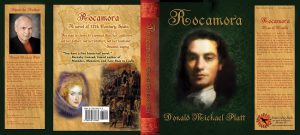This month’s guest post on the writer’s craft is by Elizabeth St.John.
Elizabeth was brought up in England and lives in California. She has tracked down family papers and residences from Nottingham Castle, Lydiard Park, to Castle Fonmon and The Tower of London to inspire her writing. Although her ancestors sold a few mansions and country homes along the way (it’s hard to keep a good castle going these days), Elizabeth’s family still occupy them – in the form of portraits, memoirs, and gardens that carry their imprint.
“All the time she dwelt in the Tower, if any were sick she made (the prisoners) broths and restoratives with her own hands, visited and took care of them, and provided them all necessaries; if any were afflicted she comforted them, so that they felt not the inconvenience of a prison who were in that place.”
Memoirs of the Life of Colonel Hutchinson
Lucy Hutchinson, 1620-1681
(Recounting the life of her mother, Lucy St.John)
Gazing from the parlor window of the Queen’s House within the walls of the Tower of London, I could see the chapel of St. Peter, the iconic White Tower… Continue reading “Memoirs from the Tower of London”


 In the opening scene of Vital Spark, Alex Allaway is driving along a coastal road, through a valley of summer corn on Maryland’s eastern shore. She’s thrilled to be returning home. She’s landed a job as a fisheries ecologist at a small marine station in her hometown of River Glen. River Glen is the epicenter of my new Chesapeake Tugboat Murders series. The village is located at the intersection of the fictional Glen River and the real Chesapeake Bay.
In the opening scene of Vital Spark, Alex Allaway is driving along a coastal road, through a valley of summer corn on Maryland’s eastern shore. She’s thrilled to be returning home. She’s landed a job as a fisheries ecologist at a small marine station in her hometown of River Glen. River Glen is the epicenter of my new Chesapeake Tugboat Murders series. The village is located at the intersection of the fictional Glen River and the real Chesapeake Bay. 